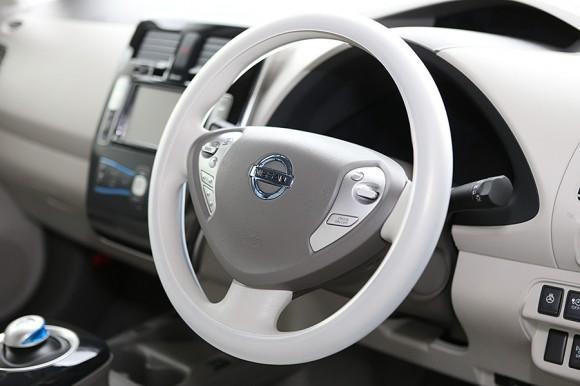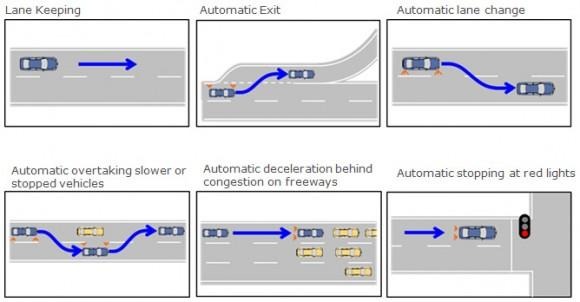Nissan self-driving Leaf first to ride on Japanese roads
Nissan is taking its self-driving car to the roads of Japan, securing a street-legal license plate for its autonomous Leaf prototype so that it can begin public testing. The car – which took us for a self-driving spin back in August – uses an amped-up version of Nissan's Safety Shield technology, and is part of the Japanese company's aim to have autonomous vehicles ready for the masses by 2020.
Japan has been late to the game allowing manufacturers to test autonomous cars on public roads. Where Google and others have racked up several thousand miles on US highways with their own self-driving prototypes, Nissan's Leaf will be the first to go out in Japan.

Although Nissan's car will be deployed with a real person in the driver's seat, ready to take over should any issues arise, the Leaf will for the most part be able to navigate itself. As well as keeping to lanes, and automatically handling congestion with dynamic speed adjustment, the car is able to navigate its way through exits and lane changes, stop at red lights and then move off again, and even overtake stopped or slower vehicles.

When we talked with Carla Bailo, president of Nissan Technical Center North America and senior vice president of NNA R&D Americas, about the company's self-driving car plans back in August, she suggested that partial deployment in more controlled situations might be how autonomous vehicles first reach the market.
Nissan isn't the only manufacturer working on autonomous vehicles: check out the car companies trying to replace the driver with robots.
"If we wait for a fully-autonomous vehicle that can go on any road surface, anywhere in the United States, we'll be waiting a long time" she pointed out to us. "If we think of it as an iterate process; if we start with, maybe, controlled communities or controlled areas, with designated lanes, then you can see that the "when" isn't that far away."
Leaf-based Autonomous Car at Nissan 360:
In addition to the cameras already installed as part of the Nissan Safety Shield system, the modified leaf uses a laser radar (LIDAR) installed into the front and rear bumpers. That, as well as new computer equipment installed in a relatively discrete dashboard update, is the only visible change to the production EV.
Meanwhile, in addition to the on-road prototype, Nissan is building an Autonomous Drive proving ground at its facility in Oppama, Japan. There it will refine the technology, as well as try to reduce the premium it adds to the cost of a car, which is still considerable; some estimates put it at $150,000 worth of hardware added to the cost of the average self-driving vehicle.
That premium is something Google was hoping the big auto firms would help soak up, but according to rumors earlier this year the search giant met with resistance. As a result, Google supposedly plans to go it alone with its own self-driving car brand that could run initially as a "robo taxi" service.
